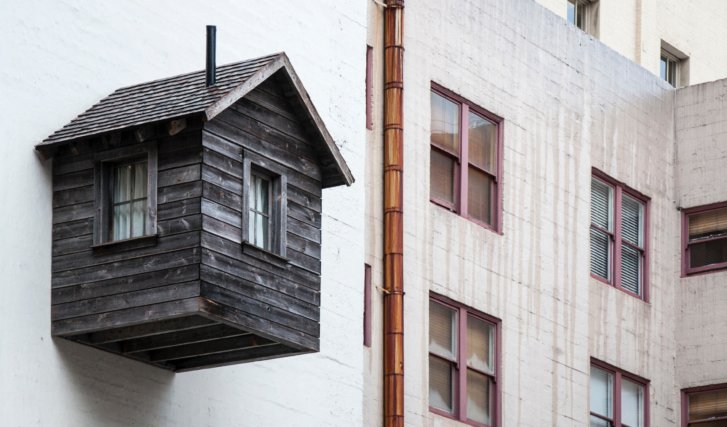In an effort to demystify some of the concepts and to provide a ready reference, a/e ProNet gathered some of its finest insurance minds and put together this list of typical coverages for design professionals. This is not intended to be an exhaustive source of information but rather a primer designed to answer basic questions and to put the reader on the right track if more information is needed. Today, we’ll touch on Earthquake insurance and Flood insurance for Architects and Engineers:
Earthquake hazards in the United States are commonly associated with Western States and in particular California, however in past history, significant earthquakes have occurred on other states including South Carolina, Missouri, Ohio and Alaska. Because in the mid-states of the US a significant earthquake hasn’t occurred for more than 100 years, people have become very complacent about a reoccurrence. Some experts say it’s not a matter of “if” but “when.” As a result of this casual attitude, a high percentage of real and personal property is not currently insured for this hazard. A further concern is that building structures in these mid-state areas are not constructed to resist earthquake damage such as most new construction in California and other western states are. Keep in mind that loss is not limited to the direct damage to property. Severe earthquake may interrupt public transportation, damage roads and bridges that prevent the movement of private vehicles. Many utilities including electricity, water, fuel gas, and sewage may be interrupted for long periods of time. Every firm would be well served to investigate Earthquake Coverage for their building and contents coverage, even though the risk of loss seems remote.
Most Earthquake coverage is written on a “Difference in Conditions” insurance form, attached to standard property policies. This form originally included a multitude of “All Risk” coverages offered with earthquake added as an insured peril. The evolution of this coverage form has changed the focus to coverage from “All Risks of Loss” to focus on earthquake, Sprinkler Leakage, and Flood and does not include landslide, subsidence or soil movement unless it is caused by Earthquake.
Policy deductibles vary by the property conditions such as age, location and the amount of premium the insured is willing to pay. There are typically three types of deductible options:
- A percentage of the Total property values at risk. This is known as a “Per Occurrence” deductible.
- A percentage of the values associated with one structure or a “Per Building or Location” deductible.
- A percentage of only the unit of insurance that suffered loss, or a “Per Unit” deductible.
Flood coverage is excluded under all basic property insurance policies but is available to all insured’s if your community participates in the National Flood Insurance Program known as “NFIP.” The NFIP was created in 1968 to provide flood insurance to individuals and businesses that are located in areas with the greatest risk of flooding, known as Special Flood Hazard Areas.
You can purchase flood insurance coverage at virtually any time, however there is a 30-day waiting period before coverage is effective, after you apply for insurance and paid the premium, with the following exceptions: 1) If the initial purchase of flood insurance is in connection with the making, increasing, extending or renewing of a loan there is no waiting period. 2) If the initial purchase of flood insurance is made during the 13 month period following the effective date of a revised flood map for a community, there is a one-day waiting period.
Homeowner’s policies DO NOT cover flood damage, but through NFIP one may purchase a maximum of $250,000 of building coverage for a single-family residential building and a Personal Property limit of $100,000 for both homeowners and renters.
Commercial structures may be insured to a limit of $500,000 and $500,000 for business personal property.
NFIP defines covered flooding as a general and temporary condition during which the surface of normally dry land is partially or completely inundated.
Two properties in the area or two or more acres must be affected. Flooding can be caused by:
- The overflow of inland or tidal waters or
- The unusual and rapid accumulation or runoff of such surface waters from any source, such as heavy rainfall or
- Mudslides, i.e. mudflows, caused by flooding, that could be described as a river of liquid and flowing mud and
- The collapse of destabilization of land along the shore of a lake or other body of water, resulting from erosion or the effect of waves, or water currents exceeding normal, cyclical levels.
Wind-driven rain IS NOT considered flooding. National Flood Insurance only covers damage caused by the general condition of flooding (as defined above), typically caused by storm surge, wave wash, tidal waves or the overflow of any body of water over normally dry land areas. Building that sustain this type of damage usually have a watermark defining how high the water rose before it subsided.
This information is for illustrative purposes only and is intended to provide only a general overview of the insurance policies described. It is important to review actual policy terms, coverage conditions and exclusions with a qualified insurance professional. Not all policies shown are necessarily recommended for all A/E firms.
a/e ProNet strongly recommends that the reader seek advice from an agent or broker specialist who is best equipped to understand the exposures to loss of each individual design firm. (Contact your local a/e ProNet broker today!)




